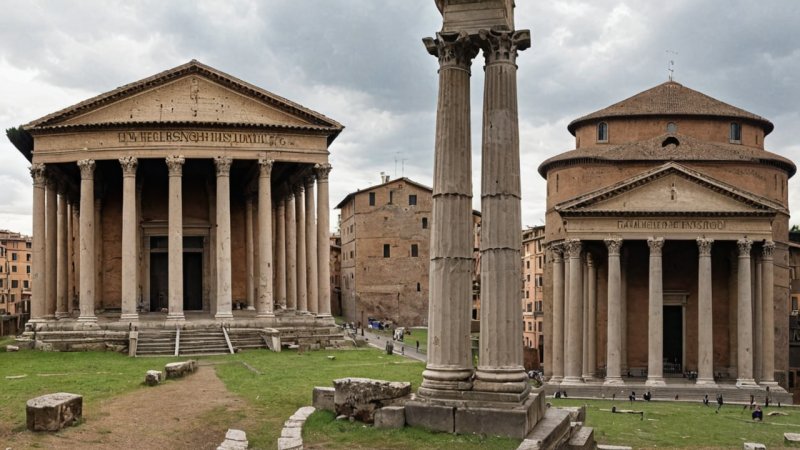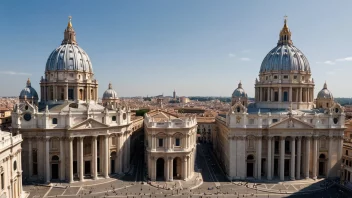Among the many historical landmarks of Ancient Rome, the Temple of Vesta stands out not only for its architectural beauty but also for its significant cultural and religious importance. This temple, dedicated to Vesta, the goddess of the hearth, was a focal point of Roman religious life, housing the sacred flame that symbolized the city's eternal life. In this article, we will compare the Temple of Vesta with another significant Roman landmark, the Pantheon, examining their historical significance, architectural styles, and cultural impact on both ancient and modern society.
Historical Significance
The Temple of Vesta, built in the 7th century BCE, served as a vital religious site where the Vestal Virgins maintained the sacred flame. This flame was believed to protect the city, and its extinguishment was considered a bad omen. The temple was not only a religious site but also a symbol of the Roman commitment to the protection of their city and its values.
Conversely, the Pantheon, completed around 126 CE under Emperor Hadrian, was originally a temple dedicated to all the gods of Ancient Rome. Its grandeur and architectural innovation reflected the might and sophistication of the Roman Empire. While the Temple of Vesta emphasized the importance of hearth and home, the Pantheon represented the universality of Roman religious beliefs.
Architectural Styles
The Temple of Vesta is characterized by its circular design, which is unique among Roman temples. This circular shape is symbolic of eternity, aligning with its purpose of maintaining the sacred flame. The temple was constructed using a combination of tuff and marble, with a colonnade of Corinthian columns surrounding the structure. Its simplicity and elegance highlight the sacredness of the hearth.
In contrast, the Pantheon showcases a grand and monumental architectural style. It features a large portico with massive columns and a vast domed roof that remains one of the largest unsupported concrete domes in the world. The oculus at the center of the dome serves as a source of natural light and symbolizes the connection between the temple and the heavens. The Pantheon’s design is a testament to Roman engineering prowess and creativity.
Cultural Impact
The Temple of Vesta held a unique place in Roman society, representing domesticity and the protection of the family. The Vestal Virgins, who were responsible for maintaining the flame, held a prestigious position in society, emphasizing the importance of women in preserving Roman values. The temple was a place of pilgrimage for Romans, reinforcing communal ties and cultural identity.
The Pantheon, on the other hand, has influenced architecture throughout history, serving as a model for numerous buildings, including churches and government structures. Its design has inspired architects from the Renaissance to modern times, making it a symbol of the enduring legacy of Roman architectural innovation. Unlike the Temple of Vesta, which focused on domestic and familial values, the Pantheon embodies the grandeur and universality of Roman beliefs.
Pros and Cons
When comparing the two landmarks, each has its own advantages and drawbacks:
- Temple of Vesta:
- Pros: Its intimate setting offers a deep connection to Roman domestic life and values. The temple's circular design emphasizes the concept of eternity.
- Cons: Its smaller size and less grand design might make it less appealing to those interested in monumental architecture.
- Pantheon:
- Pros: The Pantheon’s impressive architecture and engineering marvel attract visitors from around the world. Its historical significance as a temple for all gods adds to its cultural richness.
- Cons: Its popularity may lead to overcrowding, detracting from the personal experience of visiting such a sacred site.
Visitor Experience
Visiting the Temple of Vesta offers a more subdued and reflective experience. The site is smaller and less frequented than the Pantheon, allowing visitors to connect more deeply with the spiritual significance of the place. The serene atmosphere invites contemplation of the ancient Roman values surrounding family and home.
In contrast, the Pantheon provides a vibrant and bustling experience. With its grand scale and architectural beauty, visitors are often left in awe. However, this can lead to a more superficial experience, where the sheer number of tourists may overshadow the temple's historical depth.
Final Thoughts
In conclusion, both the Temple of Vesta and the Pantheon hold significant places in the narrative of Ancient Rome. While the Temple of Vesta offers insights into domestic Roman life and the importance of family, the Pantheon showcases the empire's architectural brilliance and religious diversity. Ultimately, your choice of which site to visit may depend on your interests—whether you prefer a more personal connection to Roman culture or the grandeur of architectural achievements. Regardless of your decision, both landmarks provide rich historical insights and are essential to understanding the heritage of Ancient Rome.






